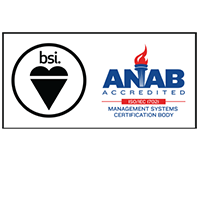Knowledge
Defect analysis using FT-IR microscopy

FT-IR microscopy is capable of revealing the chemical composition of such failures with a high spatial resolution.
Defect analysis using FT-IR microscopy
Microscopic techniques are suitable for locating and analyzing defects as small as a few millimeters or even micrometers for many different types of products. Fourier-Transform infrared (FT-IR) microscopy is capable of revealing the chemical composition of such failures with a high spatial resolution.
Failures in industrial products are often microscopically small. Besides its morphology, the chemical composition is also of interest. Without knowing the chemical composition of the defect, the determination of its origin (internal or external) is difficult.
FT-IR microscopy is an attractive tool for the analysis of defects, since this technique is capable of identifying not only organic but also inorganic components. Besides the qualitative determination of contaminants, their quantitative distribution within the measured sample area can be discovered.
Resolution
The spatial resolution of state-of-the-art IR-microscopes is limited by diffraction of light and is therefore dependent on the wavelength itself. In reflection and transmission the lateral resolution is similar to the wavelength of interest, meaning that at 1650cm-1 (= 6μm wavelength) typically a sample feature down to 6μm can be resolved. Many samples, however, are not transparent or reflective. For being measured in transmission, they need to be cut into very thin sections of 3 to 10μm using a microtome. In order to avoid time-consuming sample preparation which is not applicative to all different types of samples, FT-IR analysis is often performed by using ATR (attenuated total reflection) objectives. With this measurement mode, inclusions, fish eyes and particles can be analyzed in situ and non-invasively, provided they are on the sample surface. In addition, the ATR mode provides a lateral resolution limit that is four times better than in transmission or reflection, because the germanium ATR crystal functions as an immersion lens resulting in an additional four times magnification.

Example Polyurethane
The figure shows a magnified picture of a polymer sample taken with a 15x objective in a FT-IR microscope. This visible picture reveals some defects like a brownish inclusion and several whitish fish eyes. At the marked spots in the picture, FT-IR spectra have been measured at a resolution of 4 wavenumbers and a scan time of 15 seconds. The data have been acquired in an automated manner using the ATR objective. At each measurement position, the actual measurement spot has been defined using a software controlled knife-edge aperture. Afterwards, the measured spectra have been evaluated by searching reference libraries. In this example, the measured spectra have been compared automatically with reference spectra by taking the position, the intensity and the width of the measured bands into account.
The IR spectrum of the polymer matrix (upper right figure) reveals that the analyzed polymer product is a polyurethane. The white fish eyes, however, were found to be mainly polyamide (lower right figure). The brownish inclusion consists of several different components. The spectrum of the inclusion contains bands from a fatty acid alkyl ester, a carbonate salt and a sulfate salt (left figure).
Summary
FT-IR microscopy is a very suitable technique for analyzing failures in many products. Not only organic but also inorganic compounds are readily. Using ATR typically no preparation of the sample is required. FT-IR-microscopy can be used for analyzing sample features as small as 1 micron, depenting on the wavelength of light. As this analysis technique is universally applicable and easy to use, it has become an established quality test method in industry.
Credit : Bruker Co., Ltd.
Contact us
388/5 Nuanchan Road, Nuanchan,
Buengkum, Bangkok 10230
0 2363 8585 (auto)
0 2363 8595
081 498 9939






